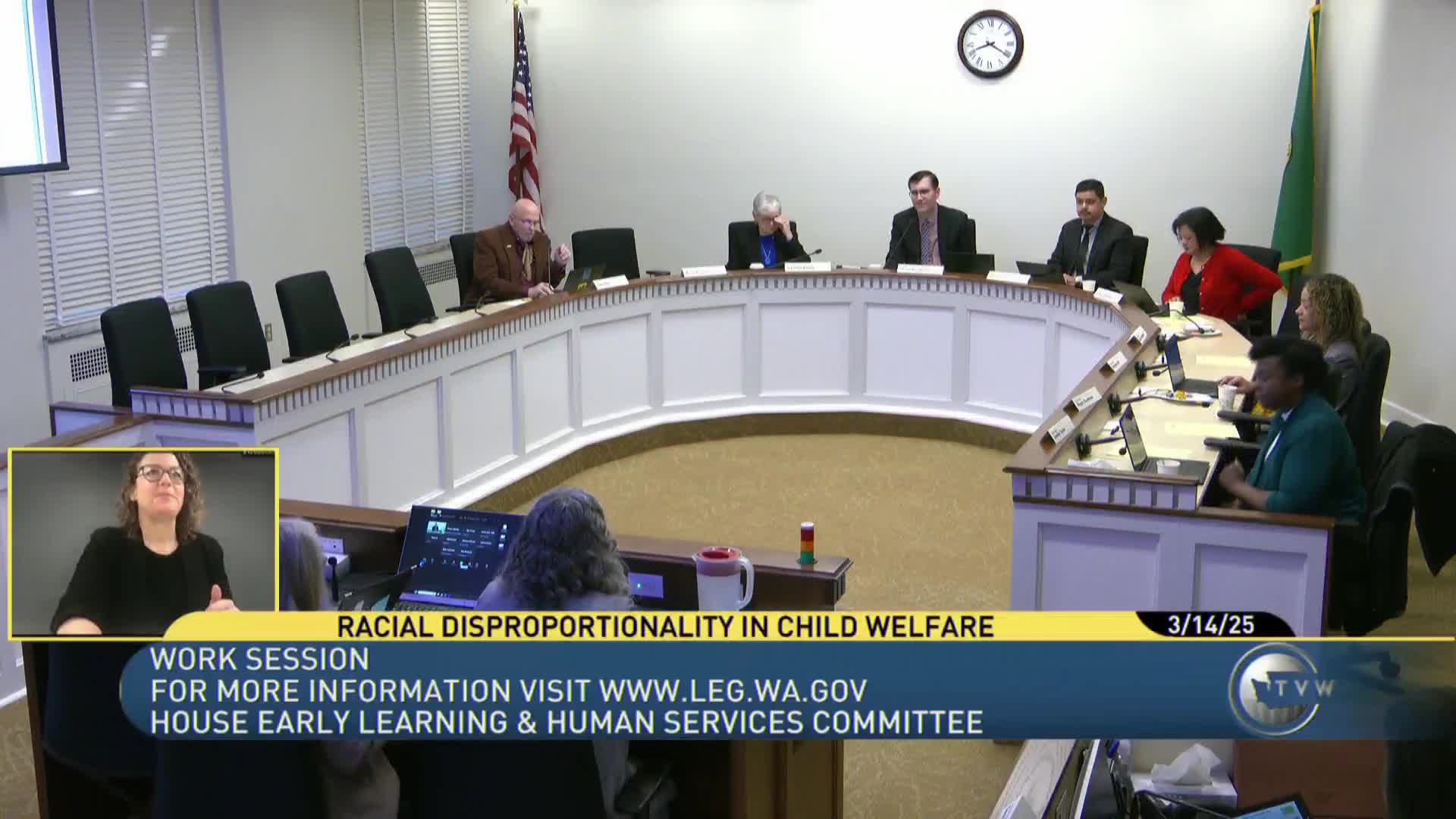DCYF presents data and pilots aimed at reducing racial disproportionality in child welfare
March 14, 2025 | Human Services, Youth, & Early Learning, House of Representatives, Legislative Sessions, Washington
This article was created by AI summarizing key points discussed. AI makes mistakes, so for full details and context, please refer to the video of the full meeting. Please report any errors so we can fix them. Report an error »

Department of Children, Youth and Families (DCYF) leaders presented the committee with data and policy work aimed at reducing racial disproportionality in child welfare outcomes.
Vicki Ybarra, assistant secretary for Partnership Prevention and Services, and Sarah Ville, director of the Office of Innovation, Alignment and Accountability, framed disproportionality as the over‑ or under‑representation of a racial or ethnic group relative to its share of the total population. Ville said the agency publishes an interactive dashboard that breaks down key child welfare metrics by race, region and decision point.
The agency highlighted that American Indian and Alaska Native (AI/AN) and Black children are disproportionately represented in intakes, screened‑in intakes and removals. DCYF presented ratios showing a 2.3 disproportionality ratio for AI/AN youth at intake that increases to 3.3 for removals; the agency said intakes account for roughly 70 percent of the disproportionality seen for AI/AN youth and nearly 90 percent of the disproportionality for Black youth.
DCYF leaders emphasized the role of poverty and community conditions: adjusting analyses to families at 200 percent of the federal poverty level reduced observed disproportionality by about a quarter for Black and AI/AN youth. Ybarra and Ville pointed to kinship placement as a key improvement—about 60 percent of children in care are now placed with kin and staff said kinship placement shows less or no disproportionality—and to geographically targeted prevention and culturally specific pilots in high‑need communities.
Staff said the agency contracted with roughly 12 organizations statewide to run culturally specific prevention pilots, funded with braided state, federal and philanthropic dollars; the committee was told the average contract size was about $100,000 and that an evaluation of those pilots is expected by the end of the year. Other steps include updated mandatory‑reporter training that addresses bias, regional disproportionality leads and targeted recruitment for diverse placement resources.
Members asked for additional disaggregated data on referral types, economic status and how referrals intersect with family law cases; staff offered to provide deeper breakdowns and noted quality‑assurance reviews of intake processes happen periodically. DCYF staff said sustained reductions in child poverty remain one of the most powerful long‑term ways to reduce child welfare involvement.
Vicki Ybarra, assistant secretary for Partnership Prevention and Services, and Sarah Ville, director of the Office of Innovation, Alignment and Accountability, framed disproportionality as the over‑ or under‑representation of a racial or ethnic group relative to its share of the total population. Ville said the agency publishes an interactive dashboard that breaks down key child welfare metrics by race, region and decision point.
The agency highlighted that American Indian and Alaska Native (AI/AN) and Black children are disproportionately represented in intakes, screened‑in intakes and removals. DCYF presented ratios showing a 2.3 disproportionality ratio for AI/AN youth at intake that increases to 3.3 for removals; the agency said intakes account for roughly 70 percent of the disproportionality seen for AI/AN youth and nearly 90 percent of the disproportionality for Black youth.
DCYF leaders emphasized the role of poverty and community conditions: adjusting analyses to families at 200 percent of the federal poverty level reduced observed disproportionality by about a quarter for Black and AI/AN youth. Ybarra and Ville pointed to kinship placement as a key improvement—about 60 percent of children in care are now placed with kin and staff said kinship placement shows less or no disproportionality—and to geographically targeted prevention and culturally specific pilots in high‑need communities.
Staff said the agency contracted with roughly 12 organizations statewide to run culturally specific prevention pilots, funded with braided state, federal and philanthropic dollars; the committee was told the average contract size was about $100,000 and that an evaluation of those pilots is expected by the end of the year. Other steps include updated mandatory‑reporter training that addresses bias, regional disproportionality leads and targeted recruitment for diverse placement resources.
Members asked for additional disaggregated data on referral types, economic status and how referrals intersect with family law cases; staff offered to provide deeper breakdowns and noted quality‑assurance reviews of intake processes happen periodically. DCYF staff said sustained reductions in child poverty remain one of the most powerful long‑term ways to reduce child welfare involvement.
View full meeting
This article is based on a recent meeting—watch the full video and explore the complete transcript for deeper insights into the discussion.
View full meeting
